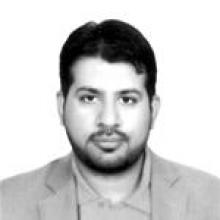The Taliban doesn't have the capacity or capabilities to retain the territories it captures. However, Afghanistan could be headed towards a military impasse that will either force the parties to find a political solution or drag it to a civil war.
Despite the Taliban’s rapid territorial gains amid the US withdrawal and a stalled peace process, Afghanistan’s military takeover by the Taliban is neither imminent nor inevitable.
A new balance of power is emerging in Afghanistan amid a fluid and volatile strategic environment, which will take shape in the next several months. Trend lines currently emerging in Afghanistan are reverse-prone and should be observed carefully without jumping to premature conclusions.
While the Afghan National Defense Security Forces’ (ANDSF) melting away in several districts is concerning, they have held their positions in Afghanistan’s urban areas where the centre of gravity of the country’s post-US future lies.
The Taliban’s gains are the natural outcome of the massive security vacuum created by the US’ exit and ANDSF’s weakness, rather than the former’s strength.
Since May, the Taliban have taken over 150 districts, mainly in the north and the west, giving them the control of one-third of Afghanistan. The Taliban’s territorial gains also include control of key border crossings such as Islam Qala near Iran, Spin Boldak with Pakistan, Sher Khan Bandar dry port adjacent to Tajikistan and the Wakhan Corridor near China.
This has generated tremendous social media propaganda, giving the insurgent group an edge in psychological warfare.
Concurrently, well-orchestrated videos of a handful of people welcoming the Taliban into captured districts — produced for social media consumption — generate an image that may not truly reflect Afghanistan’s complex realities on the ground.
Namely that the Taliban neither have the operational strength nor the conventional military muscle required to take and hold areas.
According to a UN report, the Taliban has between 58,000 and 100,000 fighters. Though the Taliban is good at insurgent and guerrilla warfare, which enabled it to force the US to negotiate the withdrawal of its troops from Afghanistan, it lacks the conventional wherewithal to retain control of the territory it is taking in different parts of Afghanistan.
For instance, the Taliban briefly captured Badghis province’s capital Qala-e-Naw, however, it was forced out of the area in two to three days. Likewise, in 2015, the Taliban made two failed attempts to take Kunduz city.
Hence, the Taliban’s capacity to retain territories is dubious at best.
At this juncture, the ANDSF are strategically prioritising what is defendable instead of what is desirable — protecting the entire territoriality of Afghanistan. They are retreating to more formidable positions to strengthen the defences of the provincial capitals, populations centres and the main cities. So far, they have successfully guarded the frontlines of the cities, frustrating and repulsing the Taliban’s territorial advances.
Keeping in view Afghanistan’s volatile security environment, the ANDSF have adopted a pragmatic approach. From the military-strategic perspective, it makes sense to cut military losses by abandoning vulnerable districts and fortifying the security of more strategically important population centres.
At the political-strategic level, however, the ANDSF retreats not only fuel the Taliban’s propaganda warfare of territorial gains but generates a false sense of the coming Taliban victory as well.
Likewise, the territorial gains also narrow the Kabul-ANDSF power differential by giving the former the control of the abandoned US Humvees, weapons and thinning of the latter through surrenders and defections.
In the late 1980s, Dr Najibullah’s government survived in office for three years, despite the Afghan mujahideen groups’ impressive military victories. If Kabul can defend urban Afghanistan and the US and Western assistance is not discontinued, the Taliban will soon exhaust themselves militarily and realise the limitations of their military power.
Arguably, the Taliban’s military exhaustion could lead to an escalatory deadlock in the next two to three months, impressing upon both sides that they cannot impose a military solution over the other. The impasse will either force both sides to talk to each other to find a political solution or dig in their heels by prolonging the conflict and pushing Afghanistan towards a civil war.
A prolonged civil war will have no winners or losers. Instead, it will plunge Afghanistan into a Syria-like situation where the deadlock between the Bashar al Assad regime and the opposition allowed regional countries and non-state violent actors to exploit the never-ending stalemate. The presence of Al Qaeda and the Islamic State Khorasan (Daesh) exposes Afghanistan to a similar trajectory in a prolonged civil war scenario.
With the US withdrawal, Afghanistan is at a crossroads yet again where peace and conflict are equidistant. A calibrated and mature political approach can pave the way for peace with proactive diplomacy of regional and international stakeholders. On the contrary, a rigid and self-serving approach will push Afghanistan towards an endless conflict.
Given its location at the intersection of the South and Central Asian regions, Afghanistan can become a stumbling block to regional connectivity, negatively impacting other regional countries with its instability.
Alternatively, it could become a hub of transit trade and an energy corridor to mega projects like CASA-1000 and the Turkmenistan-Afghanistan-Pakistan-India gas pipeline.
Around 67 percent of Afghanistan’s population is under the age of 25. Most of them were born after the Taliban’s self-styled theocratic regime in Afghanistan was toppled. Hence, they are alien to the idea of the Taliban’s rule in Afghanistan.
On the contrary, this generation has been exposed to democracy, formal education and professional careers in the last two decades. They will resist anything which is imposed on them against their democratic will. A government formed at gunpoint will bring neither peace and stability nor survive in office for a long time.
Disclaimer:
The viewpoints expressed by the authors do not necessarily reflect the
opinions, viewpoints and editorial policies of TRT World.
We welcome all pitches and submissions to TRT World Opinion – please send them via email, to opinion.editorial@trtworld.com














0 Comments